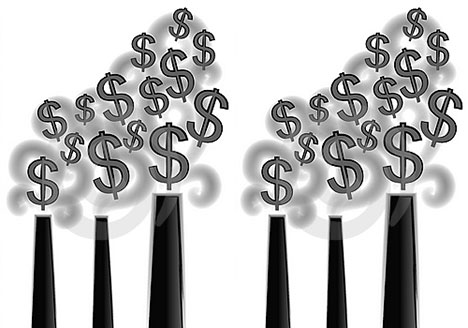Craig Idso, an expert on the fertilization effects of elevated CO2 levels on various plant species, has done a new study of the positive externality (unintended economic consequence) of increasing CO2.
In the 50 year period, 1961-2011, he estimates that there has been a $3.5 trillion benefit resulting from increased agricultural productivity. The projected benefits in the coming decades are even larger.
Egad! How could any by-product of human activity possibly be good? That sure wasn’t what I was taught in school!
In our modern age of self-flagellating hand-wringing do-gooders with too much time on their hands and anxious to find some cause to convince others to pay for assuaging their self-imposed guilt (phew), it is seldom we hear any good news about anything related to climate change.
And if just the agricultural benefits of increasing CO2 is in the multi-trillion dollar range, what about the prosperity enabled over the last 100 years by access to abundant, affordable energy? How many gazillions of dollars would that be?
Yet, the government continues to try to justify a wide range of regulations punishing the use of fossil fuels based upon the silly idea of “social cost of carbon” (SCC), the supposed overwhelming negative externalities resulting from fossil fuel use.
When are real economists with some gonads going to stand up for the social benefits of carbon (SBC)? People like Matt Ridley are speaking out on the subject. Where are the economists? Have they (like most climate researchers) been bought off, too?
Until we get an unbiased accounting of BOTH costs AND benefits of using fossil fuels, there is little hope in getting rational public policy that won’t do more harm than good.

 Home/Blog
Home/Blog




